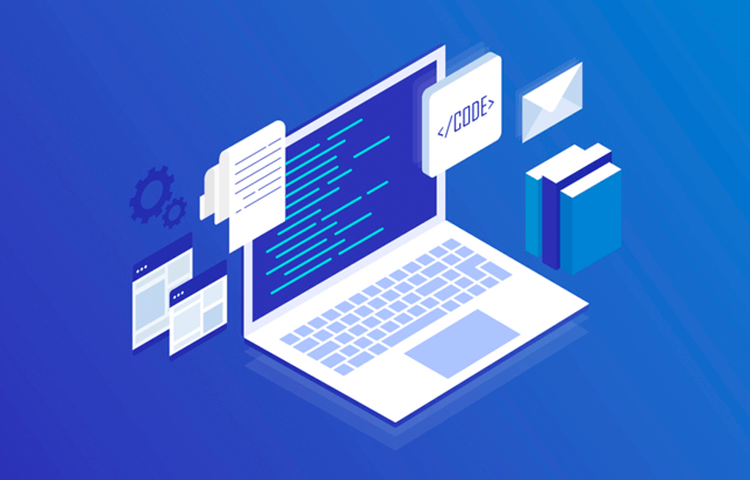What is Information Technology?
Learn about core IT concepts, career paths, and degrees in this industry overview.
What is information technology (IT)?
Information technology (IT) is the use of computer systems to manage, process, protect, and exchange information. It's a vast field of expertise that includes a variety of subfields and specializations. The common goal between them is to use technology systems to solve problems and handle information. In the following article, you can learn more about the information technology industry conceptually and from a career perspective.
What is the difference between computer science and information technology?
Computer science focuses on the design and development of computers and application software. In contrast, IT handles the maintenance and administration of computer systems, networks, and databases.
Everyday examples of IT
The list below outlines a few examples of IT that you could encounter in a business environment or at home.
Cloud computing services. Modern organizations generate massive amounts of data and rely on IT services like the cloud to manage it. Examples include collaborative cloud applications like Google Drive and Dropbox. You might use public cloud services yourself to store and manage personal data, like pictures and videos. For example, iPhone users can use iCloud and Android users can use Google One.
Network security. A virtual private network or VPN is an excellent example of an IT service used both by individuals and businesses. Firewalls and anti-virus software are some additional examples of IT applications designed to protect computer systems and networks.
Remote device troubleshooting. It’s likely that at some point in your personal or professional life, you’ve received help from an IT support specialist. Remote troubleshooting is one of the most commonly used IT services today. Typically, IT support can work with users’ devices from anywhere via internet connection to resolve software or hardware issues.
Key components of information technology
Due to the wide range of concepts and applications involved with IT, it can be difficult to define without specific context. In general, information technology is a broad term that encompasses elements like digital communication, network administration, software components, and physical devices. Many of these hardware and software systems aim to accomplish one of the following three processes:
Data mining. Data mining is the process of sorting and analyzing large amounts of data. The goal is to uncover relationships and patterns that can be used to solve problems and identify meaningful trends. Accordingly, data mining is sometimes referred to as knowledge discovery in data or, KDD.
Data transmission. The term data transmission refers to the flow of information through a network. It’s also known as digital communication or data communication because it involves the transfer and reception of information.
Database management. A database is an organized collection of data that is designed to simplify access, storage, and management. Databases are typically coordinated through a database management system (DBMS).
IT industry overview

IT is a fast-growing field. According to the US Bureau of Labor Statistics (BLS), employment in the computer and information technology sector is expected to grow 15 percent between 2021 and 2031 [http://1]. Information technology professionals have the option to pursue many different specializations, a few of which we’ve outlined in the sections below.
What is health information technology?Health information technology, or health IT, is a subcategory of the information technology field. It focuses on the management and exchange of health information like electronic medical records (EMRs) and insurance documentation. Examples of health IT applications include telehealth services such as online appointments, app scheduling, and electronic prescribing.
What is business information technology?Business information technology or BIT is a subfield of IT that focuses on applying computing concepts and methodology to business practices. The goal is to use digital technologies to solve business problems and streamline company operations. BIT can vary from industry to industry, but common incentives include process automation and increased efficiency in business-to-business (B2B) and business-to-consumer (B2C) communications.
What is information systems technology?
Information systems technology is an overarching category that encompasses both IT and IS disciplines. Information systems technology professionals focus on how IT and IS systems can work together effectively to solve problems and achieve business goals. They manage both the technology that supports information systems and the people and processes that operate that technology.
What is an information technology degree?
Information technology degrees cover a wide range of study because IT professionals are needed in nearly every industry. Here are a few subjects you can expect to study while earning an IT degree:
Programming. Coding skills are a valuable skill to have in the tech industry. You may learn an object-oriented programming language like Python or Java.
Network administration. Most information technology jobs work closely with computer networks. You’ll learn about network architecture, troubleshooting, and administration while studying IT.
Information security (InfoSec). Cybersecurity is an essential area of discipline for information technology professionals. With an IT degree, you’ll focus on InfoSec concepts and best practices.
IT career paths
Most IT professionals start out in entry-level IT jobs, as IT technicians or help desk technicians. These roles typically require the least amount of experience and can include on-the-job training. Entry-level IT jobs can help you prepare to pursue a specialization because they require you to build a working knowledge of IT basics such as troubleshooting and network maintenance.
Mid-level IT roles tend to have a smaller scope of more specialized responsibilities. Examples of mid-level IT jobs include system administrators (also known as sysadmins) who design and coordinate computer systems and information security analysts, who help protect organizations from data breaches and other cyber threats.
An advanced or senior-level IT role requires the most specialized knowledge and field experience. Some job titles that can be considered senior IT positions include leadership roles like IT managers and high-level engineering jobs like penetration testers. A penetration tester is a senior cybersecurity engineer who performs simulated cyber attacks on computer systems and networks to identify vulnerabilities.



No comments:
Post a Comment